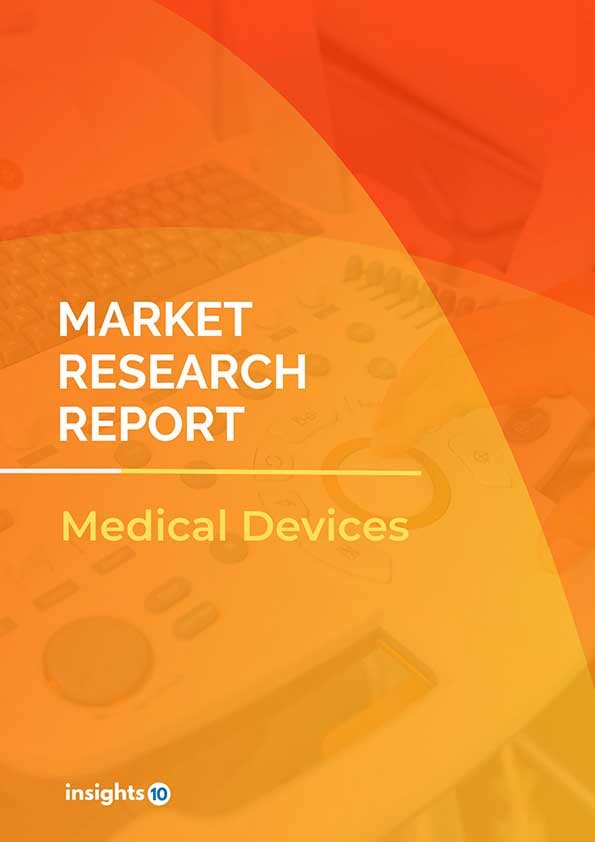Saudi Arabia Cardiac Resynchronization Therapy Market
Saudi Arabia Cardiac Resynchronization Therapy Market valued at $82 Mn in 2022, projected to reach $135 Mn by 2030 with a 6.5% CAGR. The increasing worldwide incidence of heart failure, propelled by aging demographics and cardiovascular diseases linked to lifestyle, emerges as a significant factor fuelling the growth of the Cardiac Resynchronization Therapy (CRT) market. Presently, prominent players in this market encompass Medtronic, Abbott, Boston Scientific, Johnson & Johnson, Biotronik, St. Jude Medical, LivaNova, MicroPort, Sorin Group, and Siemens Healthineers.
Buy Now

Saudi Arabia Cardiac Resynchronization Therapy Market Executive Summary
Saudi Arabia Cardiac Resynchronization Therapy Market valued at $82 Mn in 2022, projected to reach $135 Mn by 2030 with a 6.5% CAGR.
Cardiac resynchronization therapy (CRT) utilizes a pacemaker to rectify the heart's rhythm through a minor surgical procedure. Implantation beneath the skin, the CRT pacemaker coordinates the timing between the upper (atria) and lower (ventricles) heart chambers, as well as synchronizing the left and right sides of the heart. This intervention is especially vital in cases of heart failure, where insufficient pumping leads to fluid accumulation in the lungs and legs due to the asynchronous beating of the two lower chambers (ventricles). Additionally, if severe heart rhythm issues are identified, a doctor may recommend an implantable cardioverter defibrillator (ICD), which can be combined with CRT therapy. The CRT device connects wires from the pacemaker to both sides of the heart, employing biventricular pacing to send electrical signals to the ventricles, ensuring coordinated contractions and optimizing overall heart function.
In the Middle East, nearly 1.35 Mn individuals receive heart failure therapy, with Saudi Arabia accounting for 320,000 cases. By 2023, this number may increase to over 455,222, with 32,200 new cases annually due to population growth and rising risk factors. Heart failure is a leading cause of non-communicable disease deaths in Saudi Arabia, comprising over 40% of fatalities in 2010. The annual economic impact of therapy and related consequences exceeds $1.92 Bn, with prevalent risk factors including high rates of diabetes, hypertension, and unhealthy lifestyles contributing to the problem.
Pharmaceutical companies like Novartis and Merck collaborate with Medtech firms such as Abbott and Medtronic to advance heart failure medications and therapies, even if they don't directly market the devices. Novartis and Abbott's partnership is exemplified by their joint study in Saudi Arabia, combining Entresto medicine with Abbott's CardioMEMS HF System. This collaboration demonstrates how pharmaceuticals and medical technology can be integrated to enhance therapeutic approaches in heart failure management, striving for personalized care.
Market Dynamics
Market Growth Drivers
Increasing Incidence of Heart Failure: Heart failure poses a notable healthcare challenge in Saudi Arabia, with projections indicating a prevalence of approximately 455,222 individuals by 2023. The expanding pool of potential patients is fuelling the need for CRT therapy. Common risk factors such as hypertension, diabetes, and unhealthy lifestyles are widespread, playing a significant role in the upsurge of heart failure occurrences.
Increased Awareness and Education: Healthcare organizations and patient advocacy groups are working to raise public knowledge about heart failure and treatment options like CRT using public health campaigns and educational initiatives. Improved patient understanding and knowledge may lead to early diagnosis, prompt therapies, and even superior overall results.
Technological Advancements: The increasing popularity of Cardiac Resynchronization Therapy (CRT) among both patients and physicians can be attributed to technological advancements. These include the development of smaller, more energy-efficient devices with prolonged battery life and advanced functionalities. Patient care is significantly enhanced through features such as remote monitoring and telemedicine capabilities, leading to better outcomes after implantation. The future outlook for CRT appears promising, especially with emerging technologies like leadless pacemakers and artificial intelligence-driven algorithms, indicating potential advancements in the field.
Market Restraints
High Cost of CRT Devices: The cost of CRT devices is considerable, varying from tens of thousands to hundreds of thousands of dollars. For patients, especially those with limited financial resources or inadequate insurance coverage, this large cost may provide a major challenge. Patients may have significant out-of-pocket costs even with insurance, which deters them from seeking CRT therapy.
Limited Access to Specialists: The implantation of CRT devices demands specific skills and training. The scarcity of trained electrophysiologists and other specialists, especially in locations outside major cities, may hinder many patients' access to this therapy.
Reimbursement challenges: Although certain insurance plans in Saudi Arabia may include coverage for CRT, the policies regarding reimbursement can differ and might not encompass all device types or patient categories. This lack of clarity can pose challenges for patients and healthcare providers when navigating through treatment choices.
Healthcare Policies and Regulatory Landscape
In Saudi Arabia, the supervision of therapeutic medications is guided by essential healthcare regulations and regulatory authorities. The Saudi Food and Drug Authority (SFDA) functions as the primary regulatory body, ensuring the quality and safety of pharmaceuticals. Collaborating with the SFDA, the Ministry of Health (MOH) plays a role in shaping healthcare policies, with its Drug Sector overseeing pharmaceutical matters such as drug registration and pricing. The National Committee for Drug Control (NCDC) is responsible for coordinating efforts related to drug control, emphasizing the prudent use and safety of medications. The National Pharmacovigilance Centre (NPC) is tasked with monitoring pharmaceutical safety, while the Saudi Central Board for Accreditation of Healthcare Institutions (CBAHI) indirectly influences drug administration through the accreditation of healthcare institutions.
Competitive Landscape
Key Players
- Medtronic
- Abbott
- Boston Scientific
- Johnson & Johnson
- Biotronik
- St. Jude Medical (now part of Abbott)
- LivaNova
- MicroPort
- Sorin Group
- Siemens Healthineers
1. Executive Summary
1.1 Disease Overview
1.2 Global Scenario
1.3 Country Overview
1.4 Healthcare Scenario in Country
1.5 Patient Journey
1.6 Health Insurance Coverage in Country
1.7 Active Pharmaceutical Ingredient (API)
1.8 Recent Developments in the Country
2. Market Size and Forecasting
2.1 Epidemiology of Disease
2.2 Market Size (With Excel & Methodology)
2.3 Market Segmentation (Check all Segments in Segmentation Section)
3. Market Dynamics
3.1 Market Drivers
3.2 Market Restraints
4. Competitive Landscape
4.1 Major Market Share
4.2 Key Company Profile (Check all Companies in the Summary Section)
4.2.1 Company
4.2.1.1 Overview
4.2.1.2 Product Applications and Services
4.2.1.3 Recent Developments
4.2.1.4 Partnerships Ecosystem
4.2.1.5 Financials (Based on Availability)
5. Reimbursement Scenario
5.1 Reimbursement Regulation
5.2 Reimbursement Process for Diagnosis
5.3 Reimbursement Process for Treatment
6. Methodology and Scope
Saudi Arabia Cardiac Resynchronization Therapy Market Segmentation
By Product
- CRT-Defibrillator
- CRT-Pacemaker
By Age
- Below 44 years
- 45-64 years
- 65-84 years
- Above 85 years
By End-Users
- Hospitals
- Cardiac care Centres
- Ambulatory Surgical Centres
Methodology for Database Creation
Our database offers a comprehensive list of healthcare centers, meticulously curated to provide detailed information on a wide range of specialties and services. It includes top-tier hospitals, clinics, and diagnostic facilities across 30 countries and 24 specialties, ensuring users can find the healthcare services they need.
Additionally, we provide a comprehensive list of Key Opinion Leaders (KOLs) based on your requirements. Our curated list captures various crucial aspects of the KOLs, offering more than just general information. Whether you're looking to boost brand awareness, drive engagement, or launch a new product, our extensive list of KOLs ensures you have the right experts by your side. Covering 30 countries and 36 specialties, our database guarantees access to the best KOLs in the healthcare industry, supporting strategic decisions and enhancing your initiatives.
How Do We Get It?
Our database is created and maintained through a combination of secondary and primary research methodologies.
1. Secondary Research
With many years of experience in the healthcare field, we have our own rich proprietary data from various past projects. This historical data serves as the foundation for our database. Our continuous process of gathering data involves:
- Analyzing historical proprietary data collected from multiple projects.
- Regularly updating our existing data sets with new findings and trends.
- Ensuring data consistency and accuracy through rigorous validation processes.
With extensive experience in the field, we have developed a proprietary GenAI-based technology that is uniquely tailored to our organization. This advanced technology enables us to scan a wide array of relevant information sources across the internet. Our data-gathering process includes:
- Searching through academic conferences, published research, citations, and social media platforms
- Collecting and compiling diverse data to build a comprehensive and detailed database
- Continuously updating our database with new information to ensure its relevance and accuracy
2. Primary Research
To complement and validate our secondary data, we engage in primary research through local tie-ups and partnerships. This process involves:
- Collaborating with local healthcare providers, hospitals, and clinics to gather real-time data.
- Conducting surveys, interviews, and field studies to collect fresh data directly from the source.
- Continuously refreshing our database to ensure that the information remains current and reliable.
- Validating secondary data through cross-referencing with primary data to ensure accuracy and relevance.
Combining Secondary and Primary Research
By integrating both secondary and primary research methodologies, we ensure that our database is comprehensive, accurate, and up-to-date. The combined process involves:
- Merging historical data from secondary research with real-time data from primary research.
- Conducting thorough data validation and cleansing to remove inconsistencies and errors.
- Organizing data into a structured format that is easily accessible and usable for various applications.
- Continuously monitoring and updating the database to reflect the latest developments and trends in the healthcare field.
Through this meticulous process, we create a final database tailored to each region and domain within the healthcare industry. This approach ensures that our clients receive reliable and relevant data, empowering them to make informed decisions and drive innovation in their respective fields.
To request a free sample copy of this report, please complete the form below.
We value your inquiry and offer free customization with every report to fulfil your exact research needs.









































